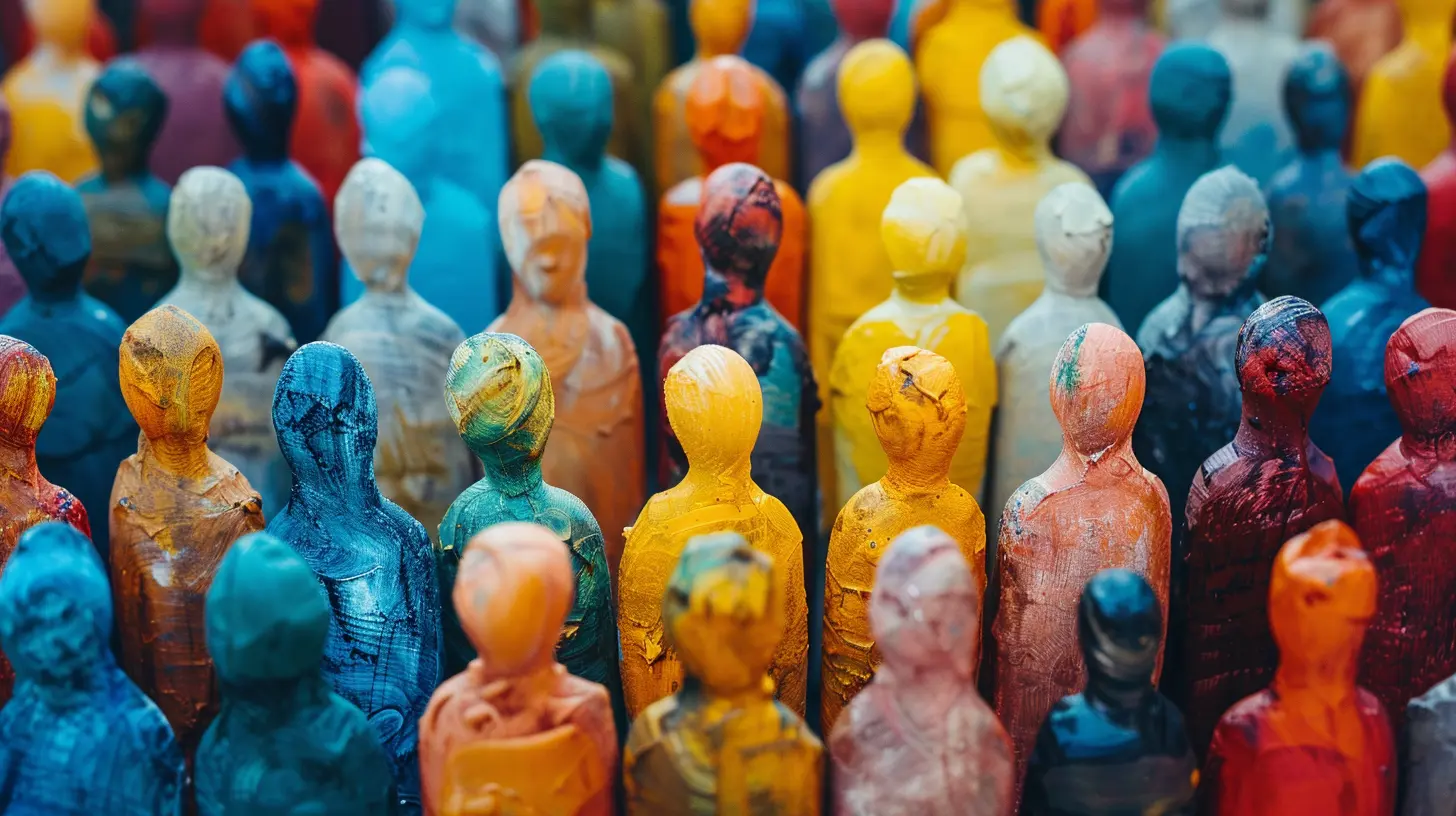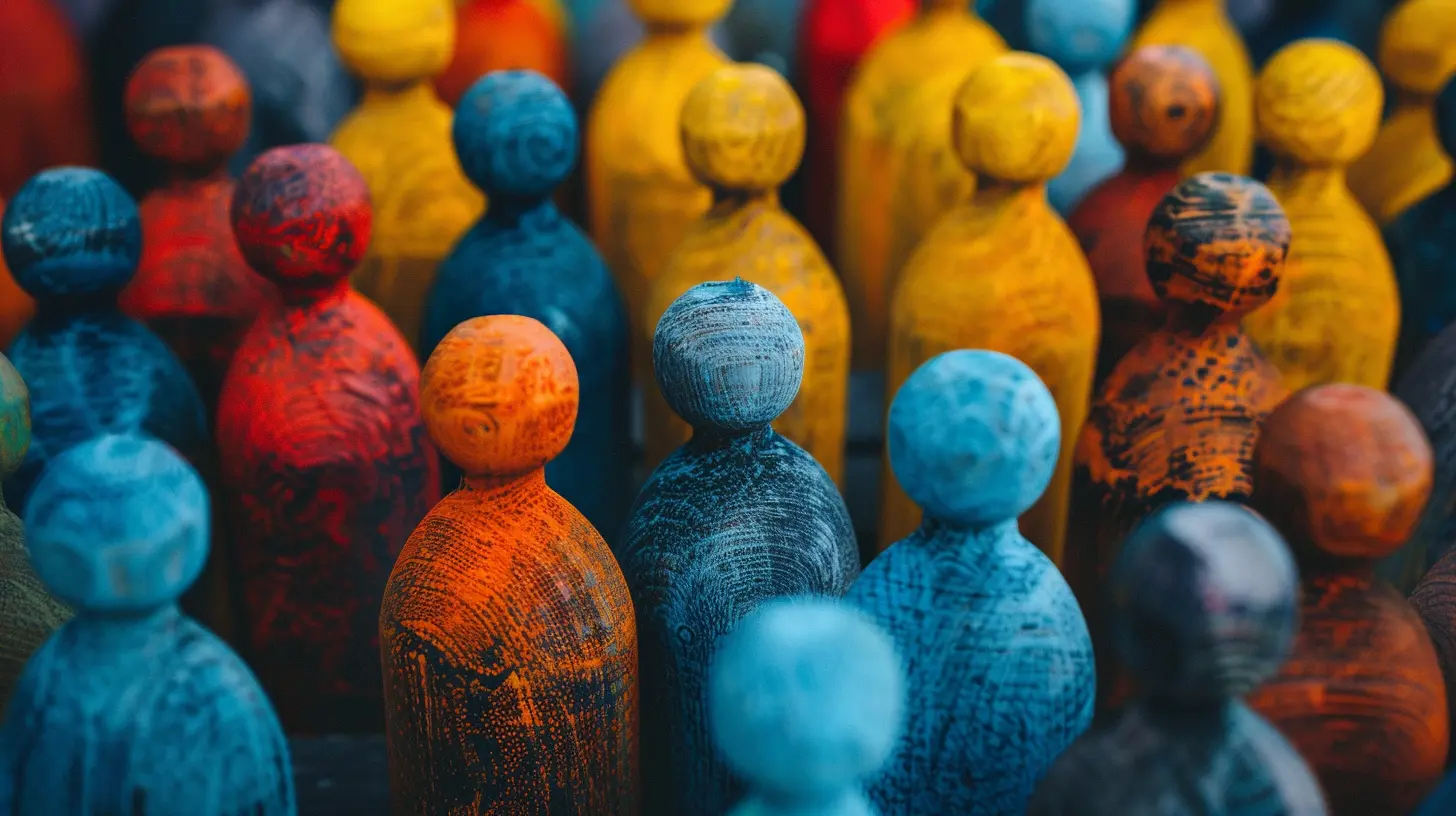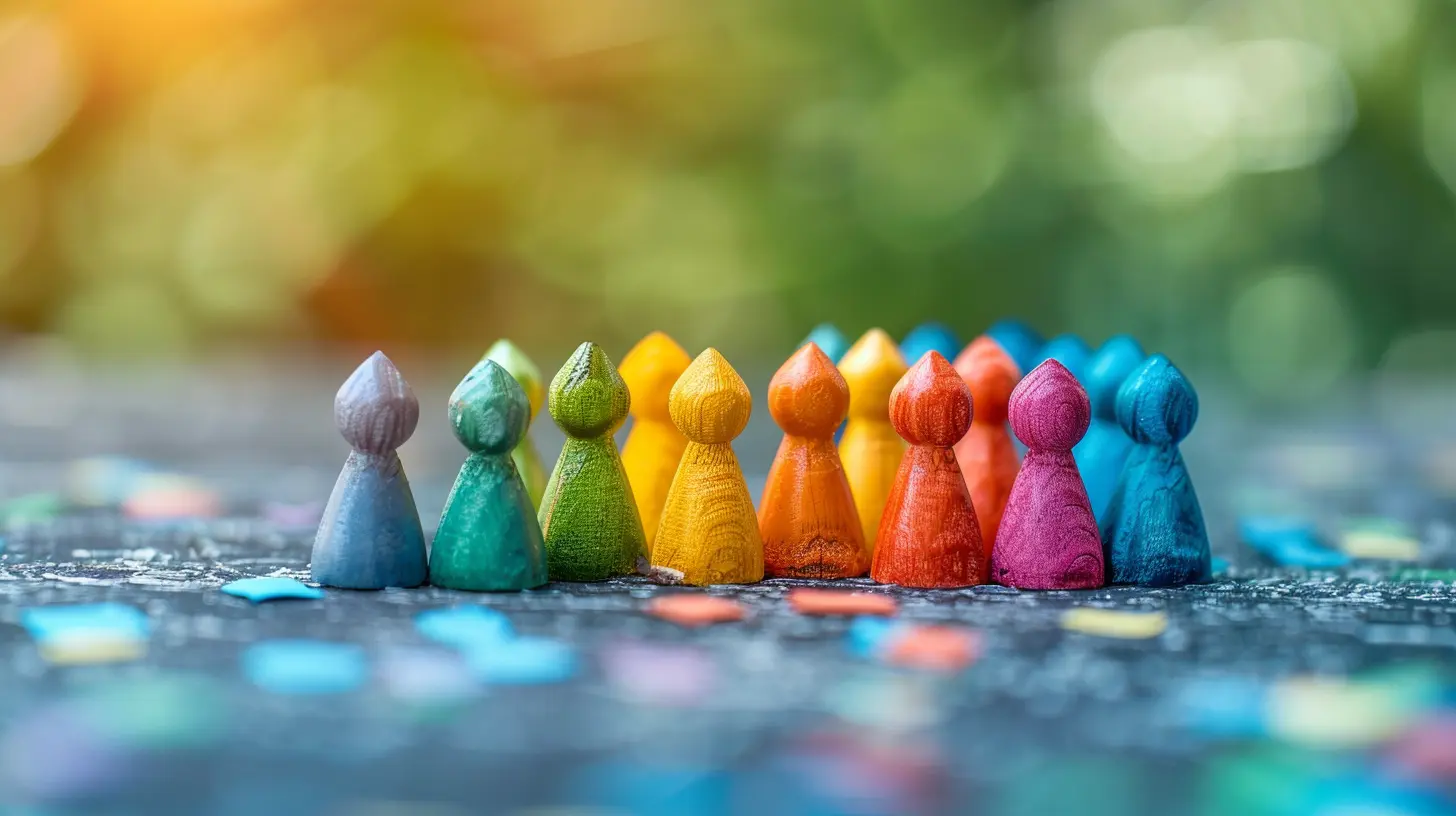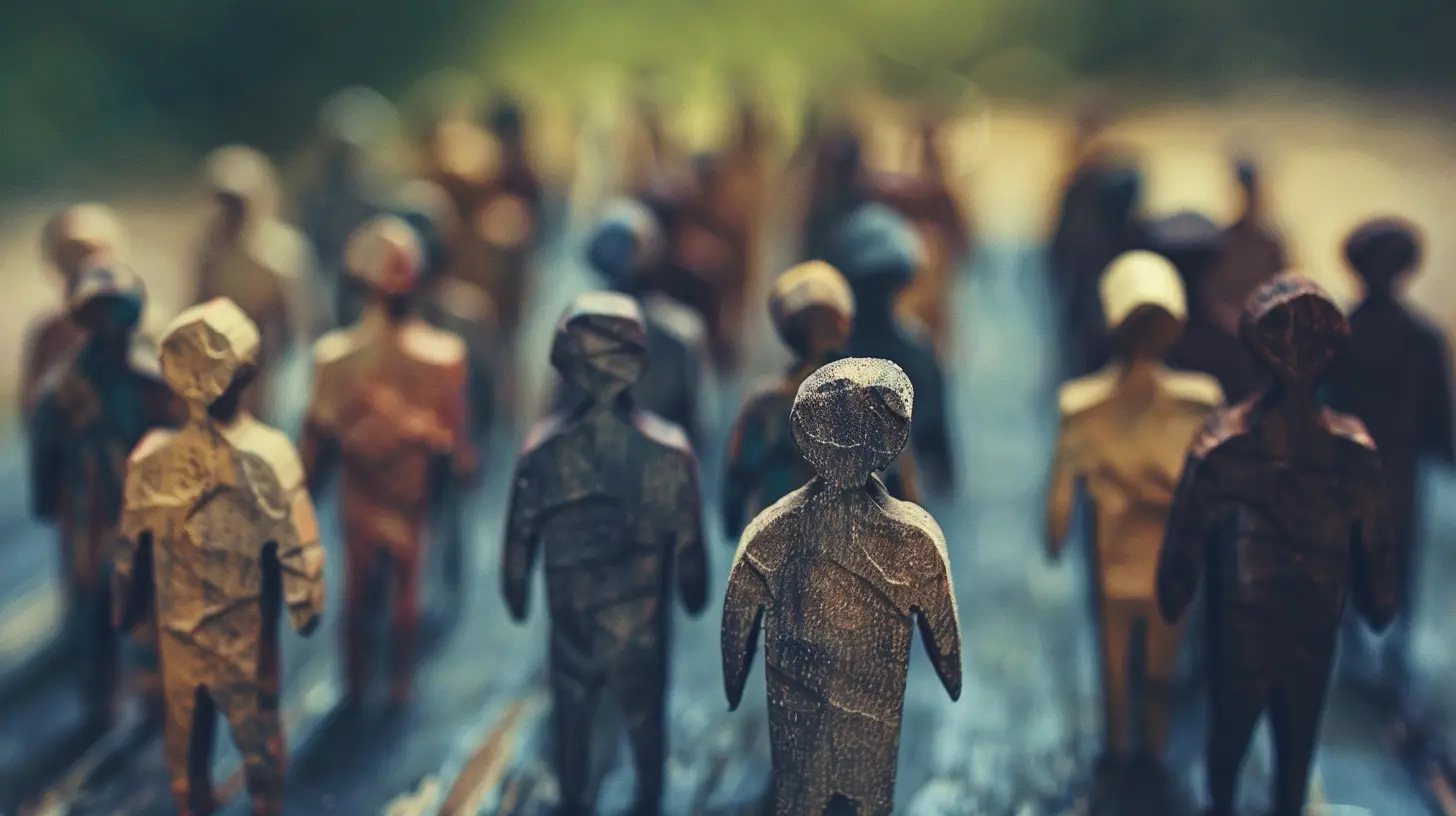Social Identity Theory: Understanding In-Groups and Out-Groups
27 November 2024
Social identity theory is a fascinating psychological concept that helps us understand why we often categorize ourselves and others into groups. These groups shape our behaviors, attitudes, and even our self-esteem. But here’s the kicker: it’s not just about who we are; it’s also about who we aren’t. This is where the idea of in-groups and out-groups comes into play, and it's something that affects us all, probably more than you realize.
In this article, we’ll dive deep into social identity theory, breaking down what in-groups and out-groups are, how they influence our interactions, and why they can lead to both positive and negative outcomes. Ready? Let’s dig in.
What Is Social Identity Theory?
Social identity theory, developed by British psychologist Henri Tajfel in the 1970s, is all about how we define ourselves based on the groups we belong to. It’s the “I am” statements we identify with: “I am a woman,” “I am a student,” or “I am a fan of this sports team.” When we assign ourselves to these categories, we’re not just stating facts—we’re shaping our identity.According to Tajfel, social identity is a part of our self-concept that comes from our membership in groups. This can be anything from nationality, religion, and ethnicity to more casual affiliations like being part of a club or a fandom. These groups influence how we see ourselves and how we behave toward others.
The Core Idea: "In-Groups" and "Out-Groups"
At the heart of social identity theory lies the distinction between "in-groups" and "out-groups." The groups we belong to—our in-groups—are central to how we perceive ourselves. The groups we don’t belong to—the out-groups—are often viewed with a mix of curiosity, indifference, or even hostility.But why do we do this? Why do we feel the need to categorize people into “us” and “them”?
Understanding In-Groups
In-groups are simply the groups to which we belong. They give us a sense of belonging and identity. Whether it’s your family, your circle of friends, or even your favorite sports team, these groups provide emotional support, shared beliefs, and a common purpose.Ever notice how you feel a rush of pride when your favorite sports team wins? Or how you feel connected to people who share the same political opinions as you? That’s your in-group at work. You might even find yourself defending your in-group if someone criticizes it. It’s like a subconscious loyalty program, but instead of collecting points, you’re collecting identity markers.
In-Group Favoritism
Here’s where things get interesting: we tend to favor our in-groups. This is known as in-group favoritism. We believe that our group is better, smarter, or more deserving compared to others. Even when there's no significant difference between groups, we still show a bias—subtle or overt—toward people who are like us.This favoritism can manifest in various ways. For example, you might be more likely to help a friend (an in-group member) than a stranger (an out-group member). In extreme cases, this can lead to prejudice or discrimination against those who don’t belong to your group.
Understanding Out-Groups
Out-groups, on the other hand, are the groups we don't belong to. These are the “others,” the people who are different from us in some way. And here’s the tricky part—out-groups often become the target of negative stereotypes and biases.Us vs. Them: The Creation of Out-Groups
The moment we categorize someone as part of an out-group, we start to draw a line between “us” and “them.” It’s almost like flipping a mental switch. This process is called social categorization, and it’s a major component of social identity theory.Humans love categories—it simplifies our world. But the downside is that it can also lead to oversimplification. Think about how easily we say, “People who support that political party are all wrong,” or, “Those people just don’t understand our way of life.” We create mental shortcuts that lump people into groups, often ignoring their individuality.
Negative Consequences: Stereotyping and Prejudice
When we categorize others into out-groups, it often leads to stereotyping. We assume that members of the out-group all share the same characteristics, usually negative ones. This is the root of many societal issues, such as racism, sexism, and xenophobia.For instance, have you ever caught yourself thinking, “People from that country are always so rude,” or “All teenagers are lazy”? These are generalizations that come from our tendency to view out-groups as monolithic, ignoring the diversity within them.
Why Do We Categorize People?
You may wonder why we even bother with in-groups and out-groups in the first place. Why not just see everyone as an individual? Well, categorizing people into groups is a natural part of human cognition. It’s our brain’s way of making sense of the world quickly and efficiently.Cognitive Efficiency
Let’s face it—life is complicated. If we had to evaluate each person we meet as a unique individual, it would take a lot of mental energy. By putting people into categories, our brains can process information faster. It’s like using a filing system in your brain, but unfortunately, that system can sometimes lead to incorrect conclusions.Self-Esteem Boost
Another reason we categorize into in-groups and out-groups is to boost our own self-esteem. When we feel good about the groups we belong to, it reflects positively on us. By elevating our in-group and putting down the out-group, we’re indirectly boosting our own sense of worth.This is known as positive distinctiveness—we want our group to stand out in a good way, which makes us feel better about ourselves.
The Social Identity Theory in Action
You’re probably thinking, “Okay, I get it. But how does this actually play out in real life?” Fair question! Let’s look at some everyday examples.Example 1: Sports Teams
Sports fandom is a textbook example of in-groups and out-groups. Fans of one team (in-group) often view fans of rival teams (out-group) as less intelligent, obnoxious, or just plain wrong. This division can escalate to the point of brawls or extreme hostility, all because of a simple team affiliation.Example 2: Political Parties
Politics is another area where social identity theory is evident. People who identify with one political party often see the opposing party as the “enemy.” They may even refuse to listen to or engage with out-group members, seeing them as fundamentally flawed or misguided.Example 3: Social Media Echo Chambers
Ever notice how your social media feed tends to show you posts from people who think like you? Algorithms are designed to keep you in your in-group, reinforcing your beliefs and opinions. This creates an echo chamber where the out-group’s viewpoints are rarely seen, let alone considered.Can We Overcome In-Group and Out-Group Bias?
Now, before you despair and think we’re all doomed to live in a fragmented society, there’s hope! While these biases are deeply ingrained, they’re not impossible to overcome.Awareness Is Key
The first step in overcoming in-group and out-group bias is simply being aware of it. Once you recognize that you’re categorizing people, you can start to question those assumptions. Are they really that different from me? Is my judgment based on facts or stereotypes?Intergroup Contact
Another effective way to reduce bias is through intergroup contact. When we interact with members of out-groups, we start to see them as individuals rather than just part of a homogenous “other.” This can break down stereotypes and reduce prejudice.Fostering Common Goals
One of the best ways to bridge the gap between in-groups and out-groups is by finding common goals. When people work together toward a shared objective, their group differences start to matter less. Think about how people from different backgrounds come together during crises, like natural disasters or global pandemics. In those moments, the in-group/out-group distinction fades, and everyone’s just trying to survive or help each other out.Conclusion
Social identity theory helps us understand one of the fundamental ways humans organize the world around them. By defining in-groups and out-groups, we simplify our social environment, but we also risk fostering division and bias. While in-group favoritism can make us feel connected and proud, it can also lead to stereotyping, prejudice, and discrimination against out-groups.The good news? We’re not powerless against these tendencies. By becoming aware of our biases, seeking out meaningful contact with out-group members, and working toward common goals, we can start to blur the lines between “us” and “them.”
So, next time you catch yourself labeling someone as part of an out-group, pause for a moment and reconsider. You might just find you have more in common than you think.
all images in this post were generated using AI tools
Category:
Social PsychologyAuthor:

Gloria McVicar
Discussion
rate this article
15 comments
Sable Coffey
Embrace your inner unicorn! Understanding in-groups and out-groups can turn social dynamics into a magical forest of friendship!" 🦄✨
February 6, 2025 at 5:59 AM

Gloria McVicar
Absolutely! Embracing our unique identities fosters inclusivity and enriches our social connections, creating that magical forest of friendship. 🦄✨
Angie Underwood
Great article! Social Identity Theory offers such valuable insights into how our group affiliations shape our perceptions and behaviors. Understanding in-groups and out-groups not only enhances our empathy but also helps us navigate social dynamics more effectively. Keep up the fantastic work!
February 2, 2025 at 5:12 PM

Gloria McVicar
Thank you for your kind words! I'm glad you found the insights on Social Identity Theory valuable. Your thoughts on empathy and social dynamics are spot on!
Meagan Cantu
Because who doesn’t love cliques?
January 28, 2025 at 5:35 AM

Gloria McVicar
Cliques can create a sense of belonging, but they also risk exclusion and reinforce division. It's essential to balance group identity with inclusivity.
Tank Kim
Join the in-group; the out-group has bad snacks!
January 24, 2025 at 5:28 PM

Gloria McVicar
Thank you for your humorous take! It's true that social identity can influence our preferences, even down to snacks!
Melissa McMurtry
“Ah, Social Identity Theory: where we can finally blame our group selfies for our questionable fashion choices and our love for dramatic team rivalries!”
January 21, 2025 at 4:57 PM

Gloria McVicar
Exactly! Social Identity Theory helps us understand how our group affiliations shape not just our preferences, but also our behaviors and rivalries.
Vance McDonough
Ah, Social Identity Theory—because who doesn't love categorizing people into groups? Why engage with individuals when you can just slap a label on them and call it a day? Identifying in-groups and out-groups: the ultimate social sport!
January 18, 2025 at 4:35 PM

Gloria McVicar
While Social Identity Theory does involve categorization, its aim is to understand group dynamics and promote inclusivity by recognizing the complexities of identity beyond labels.
Daniella McVicar
This article effectively highlights how Social Identity Theory elucidates the dynamics of in-groups and out-groups, shaping our behaviors and perceptions. By exploring these social categorizations, we gain insight into prejudice and group cohesion, emphasizing the need for awareness to foster inclusivity in diverse societies.
January 13, 2025 at 4:28 PM

Gloria McVicar
Thank you for your insightful comment! I'm glad you found the article's exploration of Social Identity Theory and its implications for inclusivity valuable.
Pierce McGarvey
Great insights on Social Identity Theory! Understanding in-groups and out-groups is crucial for fostering empathy and connections. Can't wait to explore how this impacts our daily interactions!
January 9, 2025 at 5:53 AM

Gloria McVicar
Thank you! I’m glad you found the insights valuable. Understanding these dynamics can truly enhance our interactions and empathy in everyday life!
Barbara McFarland
Great article! Understanding Social Identity Theory helps us navigate our connections and differences, fostering empathy and inclusivity in our communities.
December 30, 2024 at 4:29 PM

Gloria McVicar
Thank you! I'm glad you found the article helpful in fostering empathy and inclusivity. It's essential for building stronger communities.
Cora Warner
This article effectively highlights how Social Identity Theory shapes our perceptions of in-groups and out-groups. Understanding these dynamics is crucial for fostering empathy and reducing prejudice in diverse societies.
December 27, 2024 at 3:35 AM

Gloria McVicar
Thank you for your insightful comment! I'm glad you found the article highlights on Social Identity Theory useful for promoting empathy and reducing prejudice.
Luna Rios
Group hugs, not groans!
December 16, 2024 at 3:21 AM

Gloria McVicar
Absolutely! Fostering positive social identity promotes inclusivity and understanding, leading to stronger connections and less division among groups.
Fletcher McGill
Embracing Social Identity Theory helps us recognize the power of belonging and the impact of in-groups and out-groups on our lives. By fostering understanding and empathy, we can bridge divides and celebrate our shared humanity. Let’s inspire inclusive communities where everyone’s identity is valued and respected!
December 7, 2024 at 5:45 PM

Gloria McVicar
Thank you for your insightful comment! Emphasizing understanding and empathy is vital for fostering inclusivity and celebrating diverse identities within our communities.
Verity Reynolds
This article offers valuable insights into Social Identity Theory, highlighting how in-groups and out-groups shape our self-concept and social dynamics. Understanding these concepts can enhance empathy and reduce prejudice in society.
December 3, 2024 at 3:26 AM

Gloria McVicar
Thank you for your thoughtful comment! I'm glad you found the article insightful. Understanding Social Identity Theory is crucial for fostering empathy and addressing prejudice in our communities.
Pia McBride
Social Identity Theory reveals the stark truth: we all crave belonging. Embracing our in-groups fosters connection but also risks exclusion. Let's own our biases and confront the discomfort of our divisions. Awareness is the first step—challenge your comfort zone and expand your understanding of humanity beyond simplistic labels.
November 29, 2024 at 4:20 AM

Gloria McVicar
Thank you for your insightful comment! You're right—Social Identity Theory highlights the importance of belonging while also reminding us to be mindful of exclusion and biases. Challenging our comfort zones is essential for fostering genuine connections and understanding.
Niko Roberson
Social Identity Theory reveals how group affiliations shape our perceptions and behaviors, highlighting the critical need for empathy and inclusivity.
November 27, 2024 at 5:40 PM

Gloria McVicar
Thank you for your insightful comment! Social Identity Theory indeed emphasizes the importance of empathy and inclusivity in bridging group divides.
MORE POSTS

Cultivating Emotional Growth Through Meditation

Stress and Self-Esteem: How to Build Confidence in Tough Times

Why Play and Leisure are Essential for Stress Relief

How to Support a Loved One Struggling with Mental Health Issues

The Connection Between Mental Health and Access to Care

Cognitive Dissonance: The Mental Struggle Between Beliefs and Actions

The Link Between Perfectionism and Mental Illness

Emotional Growth and Self-Reflection: The Power of Looking Inward

Understanding Dissociative Identity Disorder

The Power of Mindfulness: Daily Practices for a Calmer Life